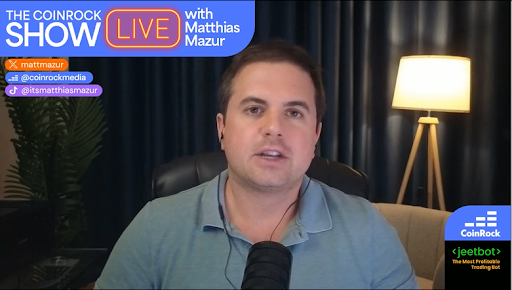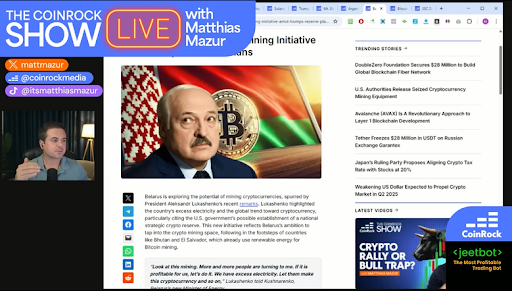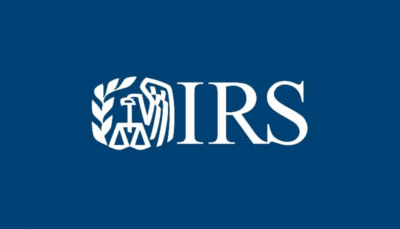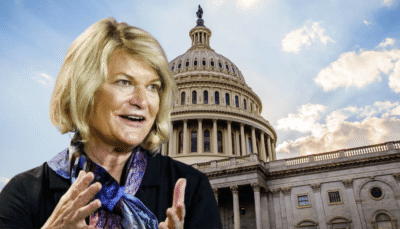The episode of the CoinRock Show featuring Matthias took a deep dive into the shifting dynamics of the crypto market, dissecting how Trump’s tariff policies and the upcoming Crypto Summit in DC are influencing traders. With a volatile trading environment, institutional power plays, and government involvement, Matthias provided an insightful take on what’s next for crypto enthusiasts.

Market Shaped By Trump’s Policies
Matthias opened the discussion by acknowledging the growing uncertainty and anxiety in the crypto space due to Trump’s tariff policies.
He emphasized that traders should be prepared for unpredictable swings, as tariffs are not just an economic strategy but a political weapon that influences liquidity, investor sentiment, and market direction.
“You are one headline, one tweet away from getting liquidated.” – Matthias
He elaborated on how the current market conditions are uniquely volatile, unlike the clear bull and bear cycles of the past. The introduction of tariffs and their potential impact on global trade have created an unstable trading environment, making crypto especially sensitive to macro-economic shifts and political developments.
Adding to this uncertainty is the much-anticipated Crypto Summit in DC, scheduled to take place within 24 hours. This event, set to bring together policymakers, industry leaders, and possibly Trump himself, is expected to shape the regulatory outlook for digital assets in the US. The speculation surrounding what might be announced has already started to ripple through the markets, causing erratic price swings.
A key market phenomenon Matthias pointed out was the unusual behavior of US-based cryptocurrencies. Some coins, previously struggling with price stagnation, have spiked in value overnight purely based on speculation that they could be included in a potential US government-backed crypto reserve.
One such example is SUI, which surged over 20% following rumors that it could play a role in Trump’s strategic crypto reserve plans. Matthias highlighted that traders need to be cautious, as many of these pumps are not backed by fundamentals but instead by speculative hype and algorithm-driven trading.
“US-based coins will always pump at the slightest hint of being part of Trump’s plans for the crypto strategic reserve.“
However, Matthias warned that these wild price fluctuations are often engineered by market makers, who capitalize on the emotional reactions of retail traders.
The influx of institutional money and political influence means that crypto is no longer a retail-dominated space—it is a battleground where traders need to adapt or risk getting wiped out.
Why Traders Should Proceed With Caution
Matthias strongly warned against reckless gambling on market movements ahead of major announcements, particularly in anticipation of the Crypto Summit in DC.
He emphasized that market manipulation is at an all-time high, with institutional players, algorithmic traders, and whales taking advantage of volatility to wipe out retail traders.
Historically, significant crypto events have been followed by aggressive liquidations, where the market pumps ahead of the news, enticing traders to take long positions, only to see a sudden reversal that wipes out leveraged traders within minutes.
One prime example of this was the 2021 Bitcoin futures ETF launch, which initially saw Bitcoin surge to new highs, only to experience a 40% crash in the following weeks.
Another case was the Ethereum Merge, where ETH prices surged in anticipation of the event, only to drop by more than 20% post-announcement.
Matthias pointed out that in the current market, this behavior is even more pronounced, especially with Trump’s influence on economic policies. His tariffs, regulatory stances, and direct involvement in crypto-related discussions are creating unprecedented levels of uncertainty.
“The goal here is to not get liquidated… and to understand that we are overall moving toward mass adoption.” – Matthias
Instead of making hasty trades based on speculation, he urged investors to zoom out and focus on macro trends rather than getting caught in the daily noise of price fluctuations. The bigger picture, he noted, is clear institutional involvement, increasing adoption, and governments actively discussing digital assets at the highest levels.
The Global Ripple Effect of US Crypto Policies
A key takeaway from the discussion was how other nations are closely watching U.S. policy shifts and adjusting their crypto strategies accordingly. With the U.S. government potentially adopting a national crypto reserve, many countries are recognizing the urgency of integrating digital assets into their financial systems.

Belarus, for example, is considering utilizing its surplus electricity for large-scale Bitcoin mining, a move influenced by the United States’ growing interest in digital asset reserves. Belarusian President Alexander Lukashenko has openly suggested that instead of exporting energy at minimal profit, the country could benefit by using it to mine Bitcoin, following a model similar to that of Bhutan.
Bhutan, a small Himalayan nation, has quietly built a $950 million Bitcoin mining infrastructure, leveraging its abundant hydropower resources to maintain low operational costs while positioning itself as a future leader in digital asset production.
This global shift toward crypto-friendly policies is not limited to smaller nations. Japan has recently proposed a significant tax reform to reduce the crypto tax rate from 55% to 20%, aligning it with traditional stock investments to encourage institutional participation.
Meanwhile, Japan’s largest financial institution, MUFG, has developed a blockchain-based stablecoin platform to facilitate digital transactions, signaling increasing mainstream adoption. El Salvador continues to expand its Bitcoin reserves, now holding over 6,100 BTC worth approximately $500 million, while also pioneering sustainable Bitcoin mining through geothermal energy from volcanic activity.
Similarly, the United Arab Emirates is rumored to have accumulated billions in Bitcoin as part of a state-backed digital asset strategy while actively establishing regulatory frameworks that make it one of the most crypto-friendly jurisdictions in the world.
The growing interest in digital assets among these nations is driven by a classic game-theory scenario, where the actions of a major economic power like the United States force other countries to adapt in order to remain competitive.
If the U.S. formally establishes a national crypto reserve, it will likely accelerate a worldwide trend, pushing more governments to mine, buy, or regulate crypto in a way that ensures they are not left behind in the new financial landscape.
Governments are no longer dismissing crypto as a speculative asset; rather, they are recognizing it as a strategic tool that could provide economic leverage, hedge against inflation, and attract investment.
This is especially crucial as central banks globally are facing increasing pressure to explore alternative financial instruments amid changing economic conditions. Whether through taxation reforms, national reserves, or large-scale mining operations, it is clear that more nations are preparing for a future where digital assets play a fundamental role in their economies.
Bigger Picture For Crypto
While the market remains uncertain, Matthias reinforced that Trump’s tariff-driven uncertainty is temporary. The long-term outlook remains bullish, especially as governments, institutions, and major financial players continue to increase their involvement in the crypto space.
Traders should avoid falling into the emotional rollercoaster of short-term panic and euphoria, instead focusing on the larger macro trends shaping the industry.
The verdict? Stay patient, avoid overleveraging, and recognize that the market is being strategically shaped by powerful players who don’t want the average investor to win easily.




